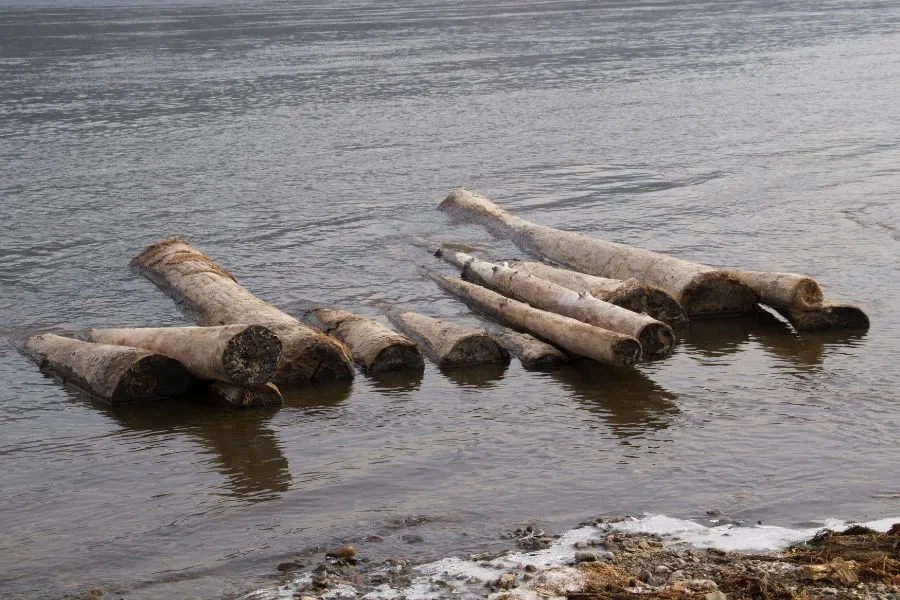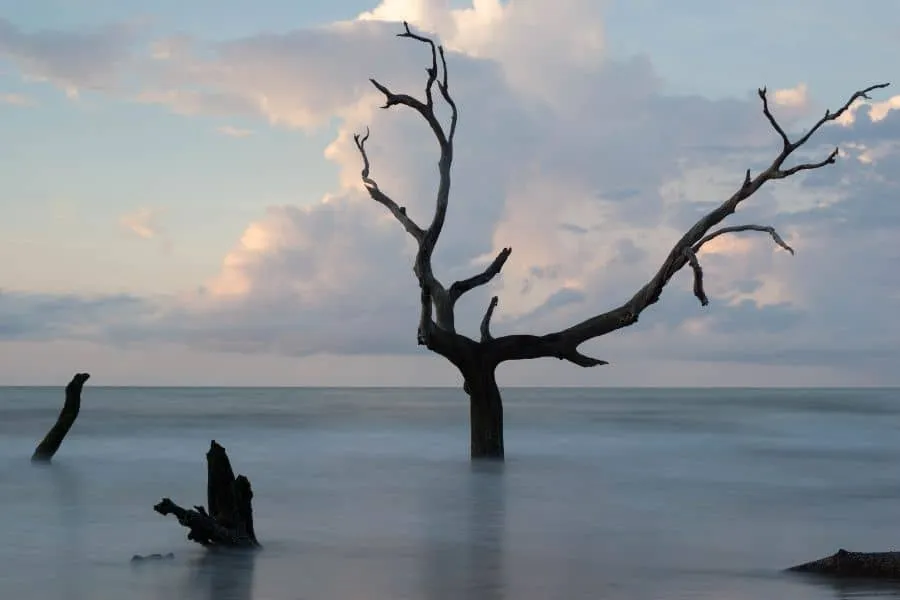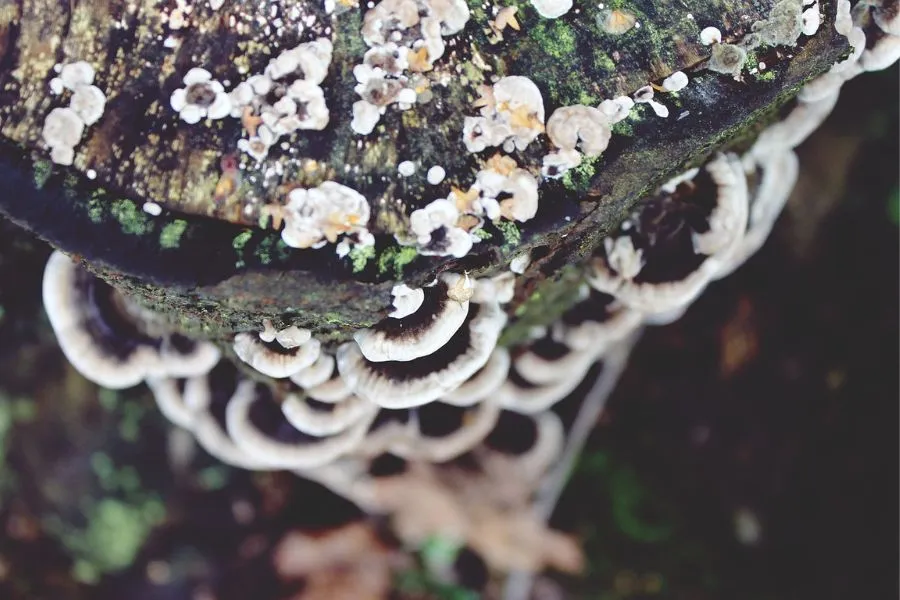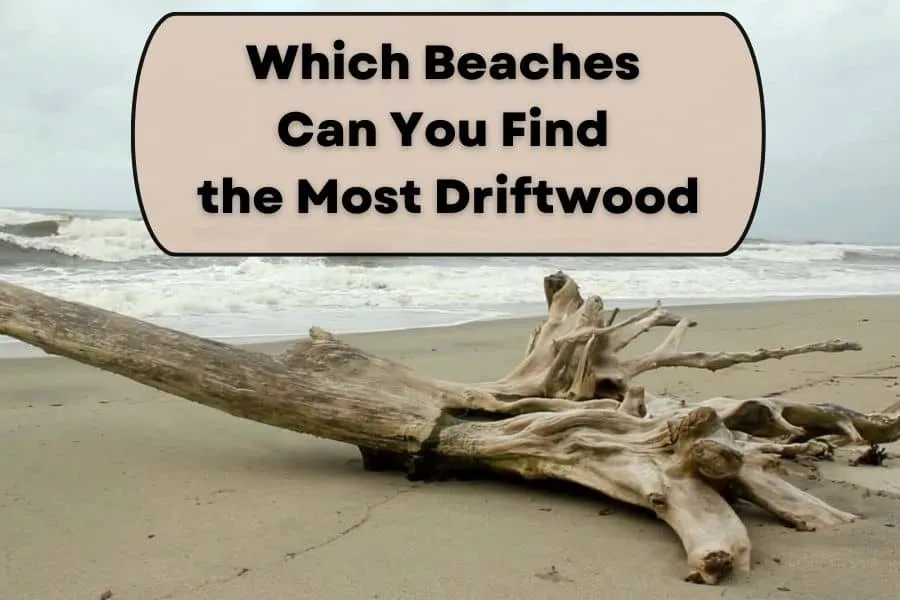There are many places to hunt for driftwood, such as markets or online. However, if you prefer to hunt for it yourself, there are no better places than beaches. However, not all beaches have driftwood, so you need to know which beaches to go to look for. Which beaches can you find the most driftwood?
Generally, the best beaches to find driftwood are Bulls Island, South Carolina; Boneyard Beach, Florida; Driftwood Beach, Georgia; and Lovers Key State Park, Florida. These beaches are known to have a lot of driftwood. However, you can still find driftwood on many other beaches as well.

This article discusses the best beaches that you can go to find driftwood. We also discuss the tips you may consider following when selecting your driftwood.
READ MORE: Where is the best place to find driftwood?
Which Beaches Can You Find the Most Driftwood?
You may be able to find much great driftwood on beaches known for it, such as Bulls Island, South Carolina; Boneyard Beach, Florida; Driftwood Beach, Georgia; and Lovers Key State Park, Florida. These beaches are known to have large piles of driftwood that you can choose from.
Generally, natural driftwood is available in many places, from rivers, lakes, parks, and forests. The driftwood from these locations is also good for many uses.
However, many people prefer to look for driftwood from beaches, as beaches, at times, may have more driftwood. In fact, some beaches are known to have a large pile of driftwood, and you may struggle to choose a piece for your collection.
The list of beaches below are beaches that are known to have a large pile of driftwood lying about. This means if you are serious about driftwood hunting, feel free to visit these beaches.
Bulls Island, South Carolina
Bulls Island is known for having a large pile of driftwood on it. In fact, aside from driftwood, many visitors also go to the beach to look for shells and sand dollars.
The only issue with Bulls Island is that of access. The beach may not be easily accessible. It is not the kind of beach you drive up and walk down to. The island can only be reachable by boat.

To travel to the island, start by driving about an hour northeast to Awendaw. There, hop on the Bulls Island Ferry. You will be taken on a 30-minute eco-tour around the Cape Romain National Wildlife Refuge before the ferry docks at Bulls Island. You can get off the ferry to explore the island.
Joining you may be a large number of photographers, birdwatchers, and also beachcombing enthusiasts hunting for shells and also sand dollars. And yes, rarely will you be the only driftwood hunter in the crowd.
Boneyard Beach, Florida
Boneyard Beach is also quite popular with driftwood hunters as it is close to Jacksonville, a mere 40 minutes drive away. It is also known for hosting a large pile of driftwood you can happily choose from.
From Jacksonville, simply take I-95 before turning into the A1A. You will soon enter the Big Talbot Island State Park. Simply drive to the northernmost park entrance, and see the beach.
You may notice a large pile of driftwood, resulting from many years of trees floating out from the river, as well as local trees being fallen out by storms. These piles of trees are not just mere eyesores. They also protect the beach from further erosion by breaking the sea waves.
The beach is visible from the road. However, the access is not direct. Once you enter, check with the park office about where to park. Then walk around a quarter mile to enter the beach, through a trail to the north.

The hike may be a little inconvenient, but you may love what you see. You may first enjoy the lovely view of the beach before setting yourself in for the driftwood hunting. There are, unfortunately, no facilities on the beach, so you may need to ensure you have some things on standby. At least ensure you have some drinking water at the minimum.
However, there are plenty of shades, which means you can always sit down and take a short rest under the large trees before continuing your hunt.
Driftwood Beach, Georgia.
If Bulls Island is the hardest to access on this list, Driftwood Beach in Georgia may be the easiest. In fact, it may just be exactly what you imagine. You drive up, park your car, and immediately walk to the beach.
Driftwood Beach beach is located on the northern end of Jekyll Island, about 1.5 hour’s drive from Savannah. It is also rather close to northern Florida, a close one-hour and a 15-minute drive from Jacksonville.
As you drive up, keep your eyes peeled for the N. Beachview Drive, between the Clam Creek Picnic Area, as well as Villas by the Sea Resort. The beach should be quite visible as you may see a large amount of driftwood.
To enter the beach, however, you will need to purchase a valid parking pass. This allows you to not just park your car really close to the beach but also access many of the island’s public outdoor areas, such as picnic tables and toilets.
You can also purchase multi-day passes if you intend to comb the beach for good driftwood. Cyclists and pedestrians enter at no charge.
This beach is popular with photographers who happily lug their gear from their cars to capture the sunrise. You may also see many people coming here to enjoy the sunrise as well.
You may also find yourself searching for driftwood with many other hunters as well. Feel free to form an ad-hoc search party, and start the hunting.
Lovers Key State Park, Florida
You may love this beach if you live in the southern part of Florida. It is a two-and-a-half-hour drive from Miami and Tampa, making it a great weekend holiday destination for many urbanites.
Simply drive south from Tampa via I-75 to make it to the beach. If you are coming from Miami, drive northwest again via the I-75 to reach the Lovers Key State Park.
When you arrive on the beach, you may notice that it is covered in beautiful, ghostly driftwood. These driftwood may have been around for so long that parts of it have been buried under the sand. This means you may see pale-looking forests full of driftwood.
The beach is also known for its breathtaking scenery, with many people visiting the beach to watch birds or ride boats to spot manatees or dolphins. You should also expect to see many beachcombers looking for shells, sand dollars, and driftwood.
How To Select The Best Driftwood?
To select the best driftwood, try to get wood on dry land or from moving water. Also, avoid wood with mushrooms, fungus, or moss. Avoid picking up any decaying wood as well.
Suppose you made it to these beaches and are ready to hunt for your driftwood pieces. However, you are unsure how to actually select one for your own collection. The last time you want is to end up with a bad piece of driftwood after spending hours driving and hunting for it on the beach.
Here are some tips to consider when looking for driftwood to ensure you do not end up selecting a lemon.
Get Wood From Dry Land, Or Moving Water: When picking up driftwood, pick from dry land, which should be easier for you since you are on a beach. If not possible, ensure that the wood is at least resting on moving water. For example, seawater that washes in and out from the sea.
The reason is that driftwood soaks in still water are much more likely to catch fungus, moss, or mushroom growth. These growths are not a good idea for your driftwood, as you may need to clean it properly or risk infection in your aquarium or wherever you place your wood.
No Mushrooms, Fungus or Moss: If possible, avoid selecting any driftwood pieces with mushrooms, fungus, or moss in it. These growths are rather obvious on the wood pieces, which means you should be able to detect them easily.

Cleaning and disinfecting work hard, and you may not have a piece of mind when putting the driftwood pieces into your aquarium or making furniture. This is because these fungi, moss, or mushroom may just make a comeback, potentially ruining your driftwood.
Avoid Decaying Wood: You also want to avoid any decaying wood. Although driftwood is technically a dead piece of wood, they usually decay very slowly over time. However, if the driftwood you found looks soft and a little jelly-like on the outside, chances are those layers have already rotted.
Decayed wood could wreak havoc in your aquarium, leaving many residues that may clog your pump or be mistaken as food by your fish. It may also cause your artwork or furniture to collapse since the wood may become too brittle.


